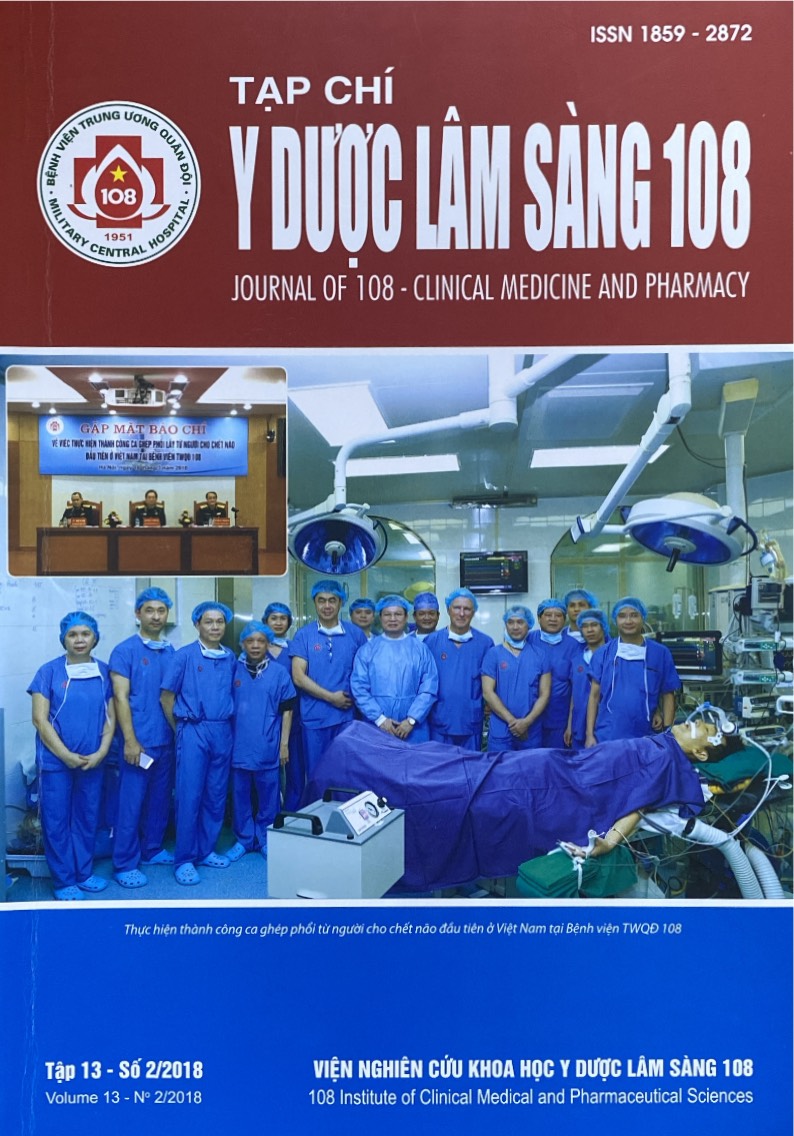Evaluating the effects of electromagnetic acupuncturing Noi Quan and Thai Xung acupuncture point method in the treatment of sleeping disorder type liver-gall bladder strong fire
Main Article Content
Keywords
Abstract
Objective: To assess the analgesic effect of electromagnetic acupuncture in the treatment of sleeping disorder type liver-gall bladder strong fire. Subject and method: Studies on 30 patients with sleeping disorder type liver-gall bladder strong fire who were inpatiently treated with electromagnetic acupuncture in the Central Acupuncture Hospital from April 2017 to August 2017. Result: The results showed that after the treatment (T0) (p<0.01), the average sleeping time after treatment reached 6.93 ± 0.975 hours. 43.3% of the patient falls asleep after 15 minutes and 50% of them is after 15 - 30 minutes. 100% of the patients sleep effectively > 85% comparing with that of before treatment (p<0.01). Sleeping quality reported: 80% great, 16.7% got better and 80% no longer suffered from sleeping disorder. 93.3% had good condition in the morning. Points marked in the PSQI scale decreased dramatically: The total average decreased from 18.69 ± 0.711 to 3.89 ± 0.513. The results of the treatment is evaluated A. EEG results: Amplitude and % index of the alpha wave increased (p<0.01); amplitude and % index of the beta wave decreased (p<0.01) after treatment. Both the amplitude and % index of the waves are in normal limits. Conclusion: Actually, this method is a safe and effective treatment. Most patients adapted to the treatment, changes in their sleeping habit usually started after 10 treating sessions, and clear improvement could be noticed after 20 treating sessions.
Article Details
References
2. Học viện YHCT Trung Quốc (2000) Châm cứu Trung Quốc. NXB Y học Hà Nội, tr. 254-258.
3. Đinh Văn Bền (1995) Điện não đồ ứng dụng trong thực hành lâm sàng. Nhà Xuất bản Y học Hà Nội, tr. 27-32.
4. Nguyễn Thị Hương (2003) Nghiên cứu tác dụng của điện châm trong điều trị bệnh tâm căn suy nhược (thể can thận âm hư theo YHCT). Luận văn Thạc sĩ Y học, Trường Đại học Y Hà Nội.
5. Nguyễn Thi Tâm (1985) Góp phần nghiên cứu tác dụng kích thích điện qua da tần số thấp lên trạng thái não bệnh nhân suy nhược thần kinh. Luận án Thạc sĩ khoa học Y dược, Học viện Quân y.
6. Đoàn Văn Minh (2009) Đánh giá tác dụng điện châm huyệt nội quan, thần môn, tam âm giao trong điều trị mất ngủ không thực tổn. Luận văn tốt nghiệp Thạc sĩ Y học, Trường Đại học Y Hà Nội.
7. Huang LS et al (2009) The needle - rolling therapy for treatment of non-organic chronic insomnia in 90 cases. Journal of Chinese Medicine 29(1): 19-25.
8. Xuân YB et al (2007) Randomized and controlled study on effect of acupuncture on sleep quality in the patient of primary insomnia. Zhongguo Zhen Jiu 27(12): 86-90.
9. Ohayon M (1996) Epidemological study on insomnia in the general population. Sleep (19): 7-15.
10. Daniel and collaborators (1989) The pittsburgh sleep quality index: A new intrument for psychiatric pratice and research. Psychiatry Research 28(2): 16-19.
 ISSN: 1859 - 2872
ISSN: 1859 - 2872
